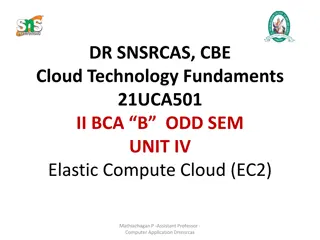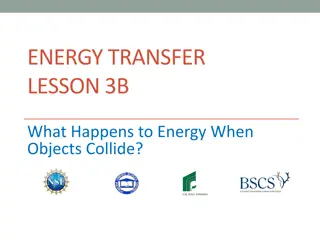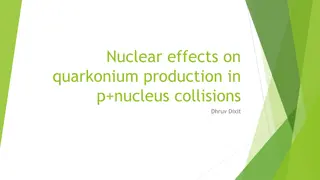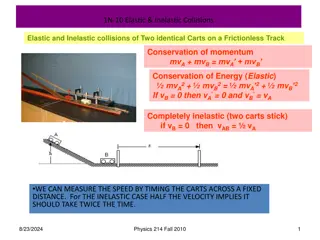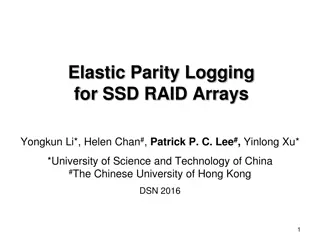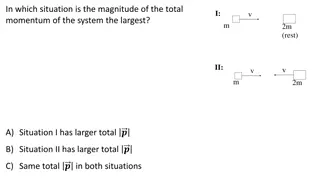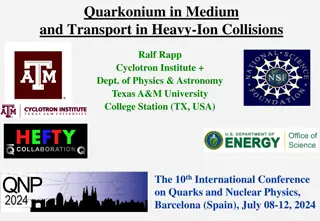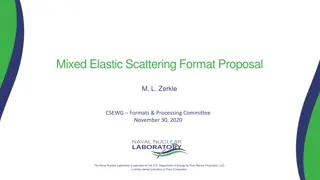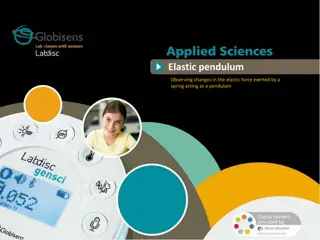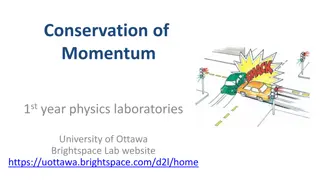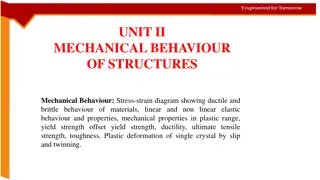Elastic Collisions in Two Dimensions
In this content, we explore the impact of smooth spheres on fixed surfaces in oblique collisions. We delve into changes in velocity, momentum, and angles post-collision, discussing coefficients of restitution and kinetic energy loss. The text emphasizes the distinction between normal and oblique impacts, explaining why angles change and how the parallel and perpendicular components of velocity affect motion. Through detailed examples and explanations, readers gain insights into the complexities of elastic collisions in two dimensions.
Download Presentation

Please find below an Image/Link to download the presentation.
The content on the website is provided AS IS for your information and personal use only. It may not be sold, licensed, or shared on other websites without obtaining consent from the author.If you encounter any issues during the download, it is possible that the publisher has removed the file from their server.
You are allowed to download the files provided on this website for personal or commercial use, subject to the condition that they are used lawfully. All files are the property of their respective owners.
The content on the website is provided AS IS for your information and personal use only. It may not be sold, licensed, or shared on other websites without obtaining consent from the author.
E N D
Presentation Transcript
Inorganic Chemistry Practical II The First Course By Lecturer Sinan Midhat Al-Bayati Asst. Prof. Anaam Majeed Rasheed Asst. Lecturer Al-Ameen Bariz Omar Supervised by: Dr. Rehab AbdulMahdi Al-Hassan
Experiment No. (4) Chromium (III) Potassium Sulfate Dodecahydrate Chrome alum or chromium(III) potassium sulfate is the potassium double sulfate of chromium. Its chemical formula is KCr(SO4)2and it is commonly found in its dodecahydrate form as KCr(SO4)2.12(H2O). It is used in leather tanning. Chromium alum crystallizes in regular octahedra with flattened corners and it is very soluble in water. The solution reddens litmus and is an astringent. Its aqueous solutionis dark violet and turns green when it is heated above 50 C. In addition to the dodecahydrate, the hexahydrateKCr(SO4)2.6H2O, dihydrateKCr(SO4)2.2H2O, and the monohydrate KCr(SO4)2.H2O are known. http://upload.wikimedia.org/wikipedia/commons/thumb/2/27/Chromium%28III%29_Potassium_Sulfate-crystals.jpg/220px-Chromium%28III%29_Potassium_Sulfate-crystals.jpg Chrome alum
Application: Chromium potassium sulfate dodecahydrate is used in catalyst, mordant, ceramics, tannage, developer and dyes The Reagent Required: 1) Potassium dichromate K2Cr2O7 (1.75 g). Sulfonic acid conc. H2SO4 (1.5 ml). 2) Absolute ethanol CH3CH2OH (3.5 ml). 3) Distilled water. 4)
Procedure: Dissolve (1.75 g) of potassium dichromate K2Cr2O7 in (8 ml) of distilled water in a beaker and warm it with swirling until all solid compound is dissolved. Add (1.5 ml) of sulfonic acid H2SO4 drop wise and carefully swirl the flask with stirring rod. Add (3.5 ml) of absolute ethanol drop wise, during this addition a dark green solution will be formed. Heat the solution in a water bath at (70oC) for 30 minutes. Prepare an ice bath and put the solution, then you will notice formation of violate crystals. Separate the crystals, then dry them, leave the solution until next week if the crystallization has not been performed. 1) 2) 3) 4) 5) 6)
Questions: Write the equation of this reaction. Give the properties of chromium Alum. What is the basic idea of this experiment? Explain. What is the color of the yield? Why?


